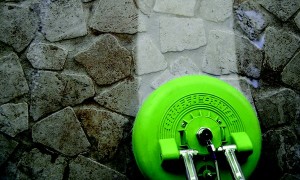Commercial Stone Cleaning – The 9 Step Stone Restoration Process

Natural stone flooring is hugely popular for use in commercial premises; this effortlessly promotes an air of distinction and sophistication and shows a level of class. Stone is used in a variety of ways in business; whether it is floor tiles, fireplaces or countertops. Although varied in its use, there is one common factor that is inevitable; over time, through use, it will require restoration. The porous nature of natural stone and the individual requirements of different stone types proves why it is imperative to seek the assistance of a professional stone cleaning and restoration expert. These specialists have the in-depth and detailed knowledge of the stone make-up, the products that complement their restoration and the industrial machinery to offer a cost-effective and efficient service. This will reduce disruption to your business.
So what is involved in this intricate process?
Step 1: an inspection will be completed on-site. From this an accurate quotation will be able to be drawn up, providing an opportunity to discuss timescales and possible limitations. It is important, at this point, to discuss any business commitments that would affect the restoration process.
Step 2: on commencement of the work, all walls, skirting and furniture should be thoroughly protected. Every element of the stone cleaning and restoration process should provide you with confidence that you are dealing with a professional outlet.
Step 3: all dry dirt, particles and soil are removed from the surface of the stone.
Step 4: a stone-specific, pre-mixed cleaning solution is applied. Damage can very easily occur at this stage if an individual has insufficient knowledge of natural stone’s requirements. Your chosen specialist should have evidence on their website of previous training completed and accreditations gained in the stone cleaning field.
Step 5: state-of-the-art rotary cleaning machinery is then used to agitate the pre-mixed solution. This machinery reaches into edges, corners and hard to reach areas, ensuring the stone flooring is evenly and consistently cleaned.
Step 6: the entire area is then rinsed. If there is evidence of any stubborn staining, the cleaning process may need to be repeated and rinsed.
Step 7: the stone floor is then required to be thoroughly dried; fast-drying machinery is available to best-served professionals which drastically reduces drying times.
Step 8: the stone tiles are then polished using diamond encrusted rotary pads. The initial pads are course and work down to a fine pad which produces a smooth and reflective finish. The level of polish is fully discussed prior to work starting as it may be that a honed finish would be chosen rather than a high-sheen.
Step 9: a stone-specific sealer is then applied to the stone. This process is usually completed by hand to ensure entire coverage. A stone sealer will penetrate below the surface and will work to repel any future liquid spillages. It provides a natural resistance, however, it is strongly recommended that any liquid on any stone surface should be mopped up as soon as possible to reduce the likelihood of staining.
This is an incredibly rewarding process that can bring extremely dirty and damaged stone back to life. Evidence available showing before and after pictures only show testament to this. Restoring stone flooring, countertops and fireplaces within your commercial setting will provide clientele with the correct opinion of your business and will undoubtedly beaming with your gleaming natural stone!